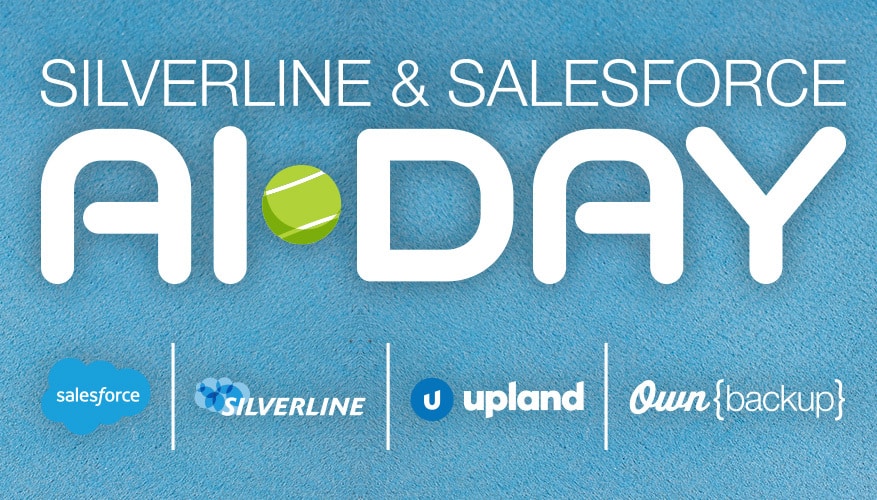It is like a game of Hide and Seek out there in the search for talent – except financial services companies are doing a lot more seeking and a lot less finding.
The trailing wake of the pandemic has left us with the so-called Great Resignation, created new forms of flexible work, and made huge economic impacts to the workforce. All these factors have contributed to major challenges firms face when it comes to recruiting and retaining employees.
According to a recent study from Schwab, almost two in five (37%) of advisory firms cite finding talent as a top challenge — and this challenge is inhibiting growth across the industry. This number is more than three times the other talent management challenges cited, including managing people (11%), ongoing training and development (9%), building a cohesive culture (9%), and knowing how to compensate and reward talent (9%).
So, how does a financial services company win at the talent war?
The state of the current battleground
The good news is that financial services companies are growing and scaling as they return to pre-pandemic levels of success. But the bad news is that firms are not only facing new challenges in trying to keep their talent pipeline flowing to match their bright future — they’re also losing ground to fast-growing FinTechs, crypto, and innovative tech companies that are luring talent away from traditional markets with flexible work options.
Fortune and Deloitte surveyed CEOs to canvas their thoughts on the current worker shortage. Sixty-seven percent of CEOs say they expect strong growth for their company over the next 12 months. Another 31% say modest growth, while 3% say weak growth. The survey found that:
- 73% of CEOs say a labor/skills shortage is the most likely external issue to disrupt their business in the next 12 months.
- 57% of CEOs say attracting and recruiting talent is among their organization’s biggest challenges. That was followed by 51% who said retaining talent.
- 35% of CEOs say they’ve expanded benefits in the past 12 months in order to strengthen their ability to retain talent.
For many financial companies, attracting tech talent is one of their biggest hurdles. Financial services firms need the right software, data, systems, and cybersecurity plus the right people in place to ensure these systems are running correctly. As a result, U.S. job postings for software engineering, machine learning, data science, and DevOps have grown rapidly and are in high demand.
Why are employees leaving & what’s the impact?
Many thought leaders cite broad attrition factors that seem logical at first glance: bad working environment, poor benefits and unsatisfactory pay, limited development opportunities, and lack of recognition. But financial services firms have long considered many of these factors in their employee experience journey. High pay, strong benefits packages, collegial working environments, generous in-office perks, and onboarding/continuing education programs are the norm. So what’s missing?
According to the Harvard Business Review, it’s two things: flexibility and purpose. As firms compete for top-tier talent — be they millenial, Gen Z, or otherwise — it’s less about what is offered in terms of the benefits package and more about how employees can contribute best to the organizations with which they work. Top of the list? Remote work, flexible schedules, managers who support work-life balance, and ensuring jobs align to purpose through social networks that create meaning and connection.
For leaders who are slow to adapt to this evolving set of workforce expectations, there is real economic consequence. According to HBR, “Employees with very meaningful work, we found, spend one additional hour per week working, and take two fewer days of paid leave per year. In terms of sheer quantity of work hours, organizations will see more work time put in by employees who find greater meaning in that work. More importantly, though, employees who find work meaningful experience significantly greater job satisfaction, which is known to correlate with increased productivity. Based on established job satisfaction-to-productivity ratios, we estimate that highly meaningful work will generate an additional $9,078 per worker, per year.”
On the flip side, attrition hits financial services firms hard in the pocketbook, especially at senior levels. According to the Society for Human Resource Management, guidelines for calculating the cost of attrition range between 50% for an entry-level employee’s salary and benefits up to 250% for a technical or leader-level employee. Even for a small financial services organization of 100 employees and assuming a very conservative average salary of $50,000, attrition could be costing the team $500,000 to $3MM annually!
5 ways to win more talent with tech
What attracts talent and makes employees stay? Simply put: great work culture and opportunities for development. According to McKinsey’s Future of Work report, the secret to hire and retain top talent, which they call the “scarcest capital of all,” is to create a top-notch employee experience and to commit to “a renewed emphasis on talent development.” Employees who feel engaged, and who experience a strong social community and meaning at work are much likelier to commit, to perform at the highest levels, and to stick around through markets thick and thin.
Beyond developing a formal flexible work policy or implementing new benefits programs, organizations are increasingly turning to a thoughtful technology-assisted employee journey to design their company culture and create an incredible experience that creates loyalty for the long haul. This journey starts with the earliest phases of job advertising and recruiting, through hiring and onboarding, relationship-building, and ultimately career development.
Let’s take a look at how some of the financial services clients Silverline works with are creatively using technology to level up their own talent acquisition games!
1. Engage on social media
The practice of finding, attracting, and engaging with candidates on social media is called social recruiting. A study found that 92% of employers use social and professional networks to recruit talent, ranking above employee referrals, job boards, and job ads. Social recruiting tends to be effective since it connects with candidates who are most likely already spending time on social media.
Using a social recruiting tool, such as Salesforce Marketing Cloud Social Studio, makes it easier for financial firms to post jobs on sites like LinkedIn, Twitter, Facebook, and other social media platforms. You can draft, schedule, review, approve, and publish job information all within a single social tool, and convert candidates through to landing pages that easily capture their interest and which stage of the job search they’re in!
2. Educate candidates about culture and values
From the moment a candidate engages with your firm (as in the social advertising example above), your employee journey has begun! Taking cues from the more traditional customer journey design process, many of the firms we work with are combining the power of their marketing automation tools and the high-volume nature of the recruiting process to educate applicants about their corporate culture, company values, responsibilities, and expectations of the role they’ve applied for, and benefits and perks of working with the firm.
Not only is this powerful brand marketing, but there are some real advantages of doing this work in an automated fashion: consistent brand and benefit messaging, time saved in the hiring process, reduced recruiting headcount, and shorter onboarding times with greater employee engagement, since staff come in the door already educated about what’s offered to them!
3. Create and nurture online communities
Since culture is rated so highly among respondents as a factor for working at a financial services organization, it’s important to consider which technologies will power and reinforce culture. By building online communities for current employees or company alumni, financial firms can create a welcoming environment — a digital watercooler experience — that can be used to ask questions, easily access resources and training, or even share talent referrals from their friends and family network.
For many years, Silverline has helped many financial services companies leverage Salesforce Experience Cloud to create these intranet experiences that connect internal teams and help build communities that drive engagement. The possibilities are endless. At Silverline, we’ve even built a Design Library on top of our intranet that connects architects to resources that help them innovate more rapidly and take advantage of brilliant work their co-workers have contributed in the past!.
4. Develop chatbots, even for mundane tasks like interview scheduling
A study by PwC on recruiting practices suggests that tech can streamline routine tasks, such as scheduling interviews or answering questions during the hiring process. Forty-four percent of candidates said they’re open to using automation and technology options for routine touchpoints and to get information during the recruiting process.
Using chatbots, such as Einstein Bots that are built into Salesforce Service Cloud, or applications built natively on the Salesforce platform like Qualified, allows job applicants to quickly interact with a financial services organization without waiting for a human to reply. Chatbots can send messages, ask questions, gather necessary documents like resumés and cover letters, and perform actions based on rules or applicants’ inputs.
Some of the most valuable capabilities of our chatbots at Silverline are the ability to send instant notices through Slack, and to schedule interview appointments automatically on our calendars with Zoom dial-ins already included! This ability saves our team countless hours and endless emails spent scheduling, giving them more time to speak with clients and candidates!
5. Design your Digital HQ on Slack
Last but certainly not least, as financial services companies embrace remote work and flexible work options for their employees, it’s important that collaboration tools can keep up with how the work needs to get done. Many of the Private Equity and Venture Capital firms we’ve worked with for the last decade have fully embraced Slack across their entire portfolio, collaborating on internal investment opportunities in the same secure environment as they’re working side-by-side with legal counsel or external co-investors, and with the management teams of the portfolio companies that they count amongst their valuable assets. As the industry becomes increasingly comfortable with compliance implications and Slack’s technology matures its monitoring, archival, and alerting tools, many financial services firms are building digital cultures that help employees work across the globe.
Not only can the introduction of Slack and its external Slack Connect channels increase productivity and reduce email traffic by leaps and bounds, it also helps cultivate a culture of knowledge and learning. As so many of the studies cited here note, culture keeps employees engaged and connected to purpose. Curated channels for sector and market updates, macroeconomic research, niche interests, and social communities all lead to more engagement, loyalty, and inbound talent referrals!
How Silverline supports the talent battle
Financial services organizations need all the help they can get to win the battle for talent. By automating and streamlining recruitment tactics, firms can dedicate more time and effort to other key areas of the company.
As a Salesforce consulting partner, Silverline has the expertise to help financial services organizations strategize, plan, and implement the technology needed to recruit top talent, so you can be a winner at the game of Talent Hide and Seek. Watch our on-demand webinar for more strategies to help you attract and keep the best talent.




